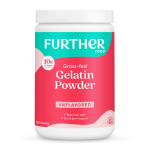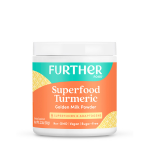As a licensed and board-certified acupuncturist and herbalist, I work with patients regularly to help them use Traditional Chinese Medicine (TCM) to improve their health symptoms or conditions. One of the most common ailments that I help patients with at my clinic is the treatment of menstrual cramps and regulating periods. Read on to learn more about dysmenorrhea and alternative treatment for dysmenorrhea using TCM.
What is Dysmenorrhea?
Before we dive into alternative treatment for dysmenorrhea, what is this health condition? The term dysmenorrhea is used to describe painful periods that can consist of cramping, throbbing, stabbing, or other discomforts that are experienced monthly by many women. Even if every period isn’t painful, some people experience menstruation as debilitatingly intrusive to their daily life. This can easily cause issues when you need to carry on with your tasks and responsibilities but cannot do so due to the excruciating pain and symptoms you are feeling. Other women may have more mild symptoms of discomfort, though this also can become quite bothersome.
Western medicine currently differentiates between primary and secondary dysmenorrhea; primary meaning there is no known cause, while secondary means that the patient’s dysmenorrhea is due to a physical issue or blockages like fibroids or endometriosis.
Treating Dysmenorrhea with TCM
Using Chinese Medicine, like acupuncture for dysmenorrhea, has a longstanding history of treating reproductive health. When wondering if acupuncture for dysmenorrhea can treat a certain ailment, it is important to remember that Chinese Medicine is a complete system of medicine that does not rely on any outside modalities or Western diagnostics. While a practitioner may use this type of information to create an integrative and holistic treatment plan, Chinese Medicine has a unique way of assessing and addressing reproductive health
As a complete system of medicine, Chinese Medicine uses its categorization and diagnostic assessment to determine the root cause of your painful periods and then dig deep into resolving it. For painful periods, multiple diagnoses are common, but the most prevalent is called qi stagnation, blood stagnation, or blood deficiency. As described below, each of these different TCM diagnoses presents with unique symptoms and indicators that allow the practitioner to determine how to treat and where to focus first.
Qi Stagnation Symptoms
According to TCM principles, Qi, the energy of the body, must move smoothly through the liver and the entire body for ovulation and menstruation to occur. A person experiencing Qi stagnation may feel dull and achy pain with symptoms of PMS. People with Liver Qi stagnation may experience PMS symptoms of bloating, irritability, or breast tenderness during ovulation. Additionally, during menstruation, they often have cramping and painful periods that are dull, crampy, or colicky. They may also feel angry or emotional during this time or feel intense fatigue and desire to rest.
If you are diagnosed as having Qi stagnation symptoms, we use a combination treatment of acupuncture and herbs to treat this pattern. Many people experience great relief from using an alternative treatment for dysmenorrhea herbal formula called Xiao Yao San (Rambling Powder or Free and Easy Wanderer). This natural remedy for dysmenorrhea has been used for thousands of years and was first recorded by Chen Shiwen in 1080. This natural remedy for dysmenorrhea is typically taken for a week before your period is due to start and can be continued during your period.
Blood stagnation symptoms
Another diagnosis for dysmenorrhea is painful periods due to blood stagnation. This most often displays as a sharp and stabbing pain that occurs with dark and clotted menstrual blood. Blood stagnation means the blood flow is impeded or obstructed. Additional indicators of blood stagnation can include easy bruising and abdominal tenderness. For this condition, the Chinese herbal therapy I recommend uses the formula Tao Hong Si Wu Tang (Four Substance Tea with Safflower and Peach). This natural remedy for dysmenorrhea is taken during the first 3 days of your period to alleviate pain and move the blood while breaking up stasis.
Blood deficiency dysmenorrhea
The third common pattern for dysmenorrhea is due to blood deficiency. This is a traditional pattern that is indicated by a dull pain that gets worse toward the end of your period or after the period ends. This is often accompanied by fatigue and a desire to lie down, as well as a pale face and nails. The herbal medicine Ba Zhen Tang (8 Treasure Tea) can bring relief to people experiencing this pattern. These herbs support both the qi and the blood and regulate menstruation.
Using TCM and acupuncture to relieve pain
Herbal medicine used in combination with acupuncture for dysmenorrhea can provide a comprehensive treatment to support and move the Qi, move the blood, and relieve stagnation.
Two of the most popular acupuncture points for treating dysmenorrhea are Spleen 6 (Sanyinjiao) and Large Intestine 4 (Hegu). Spleen 6 is located on the medial lower leg about one hand’s width up from the medial malleolus. Stimulating this point with acupuncture or acupressure is thought to release hormones that can bring relief from cramping and pain. In fact, a study demonstrated that acupressure at the Spleen 6 point had a significant effect on the reduction of the severity of menstrual symptoms, duration of the resting period, and reduction in the number of ibuprofen used by patients in the study. The study also showed that pain severity in the first two months after treatment with acupressure was significantly lower than a comparative group using ibuprofen.
Additional suggestions for alleviating menstrual cramps and dysmenorrhea:
- Regular exercise and staying active. Exercising keeps the blood and Qi moving and can prevent stagnation. In Western terminology, exercise releases endorphins which relieve pains in the body
- Use moxibustion. Moxa is a traditional Chinese treatment that uses herbs to warm the body. It can be done over acupuncture points including Spleen 6 to regulate the menses and warm the uterus.
- Omega 3 fatty acids. Supplementing with Omega 3 fatty acids may alleviate menstrual cramps.
- Magnesium. Supplement with magnesium to relax the muscles and encourage blood flow.
- Try eating a low-fat and high-fiber diet. Eat plenty of greens and beets during your cycle and nourish with seeds and healthy oils.
- Vitamin E. Try taking Vitamin E for a few days before and during the period. This can facilitate the shedding of the uterine lining.
For more recommendations on how to deal with your symptoms using TCM, I recommend you speak to a trained acupuncturist and herbalist who can help you create a custom plan just for you. If you would like to learn more about TCM or work with me, you can learn more about me at Healing Points Acupuncture and Wellness Center.
Want To Read More?
How To Naturally Treat Endometriosis Using TCM

























